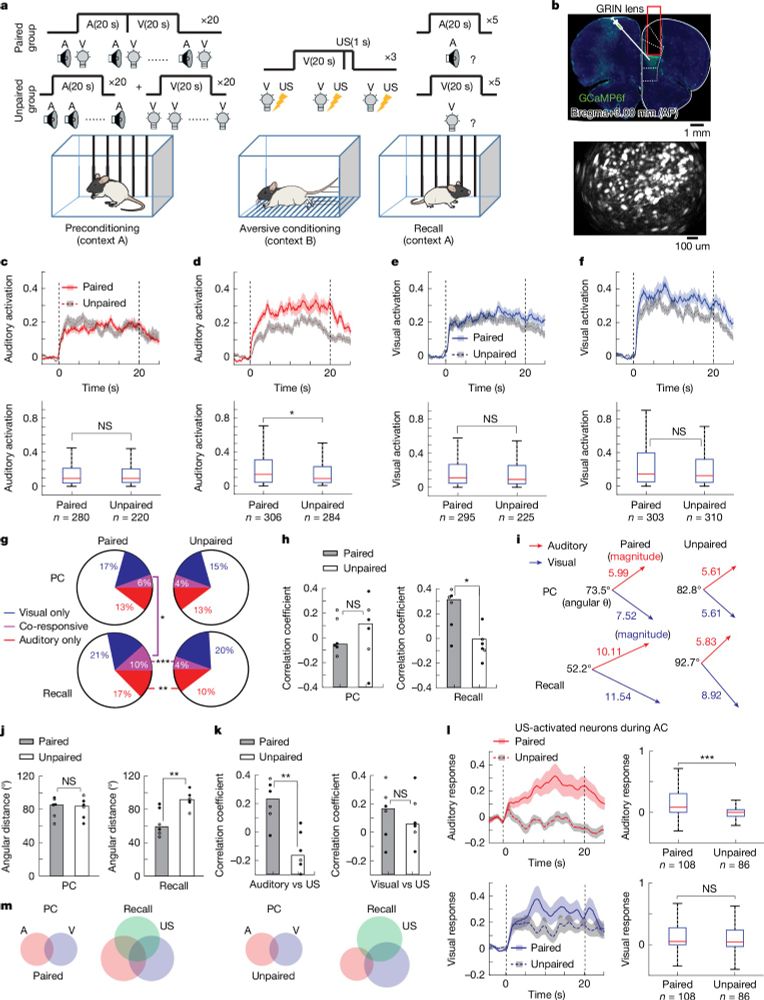
Here we go:
Here we go:
arxiv.org/pdf/2410.03972
It started from a question I kept running into:
When do RNNs trained on the same task converge/diverge in their solutions?
🧵⬇️

arxiv.org/pdf/2410.03972
It started from a question I kept running into:
When do RNNs trained on the same task converge/diverge in their solutions?
🧵⬇️
Mass-univariate analysis is still the bread-and-butter: intuitive, fast… and chronically overfitted. Add harsh multiple-comparison penalties, and we patch the workflow with statistical band-aids. No wonder the stringency debates never die.
Mass-univariate analysis is still the bread-and-butter: intuitive, fast… and chronically overfitted. Add harsh multiple-comparison penalties, and we patch the workflow with statistical band-aids. No wonder the stringency debates never die.

With current technology, it is impossible to tell whether survey respondents are real or bots. Among other things, makes it easy for bad actors to manipulate outcomes. No good news here for the future of online-based survey research

With current technology, it is impossible to tell whether survey respondents are real or bots. Among other things, makes it easy for bad actors to manipulate outcomes. No good news here for the future of online-based survey research
a 🧵 1/n
Drain: arxiv.org/abs/2511.04820
Strain: direct.mit.edu/qss/article/...
Oligopoly: direct.mit.edu/qss/article/...




a 🧵 1/n
Drain: arxiv.org/abs/2511.04820
Strain: direct.mit.edu/qss/article/...
Oligopoly: direct.mit.edu/qss/article/...
Apply by Jan. 14, 2026: santafe.edu/ucr
Apply by Jan. 14, 2026: santafe.edu/ucr
I use it in talks because it's pretty and also because, as an audience member, I am perpetually squinting at people's slides

I use it in talks because it's pretty and also because, as an audience member, I am perpetually squinting at people's slides
www.wimpouw.com/files/Bogels...

www.wimpouw.com/files/Bogels...
www.404media.co/ice-and-cbp-...

powerlmmjs.rpsychologist.com
- Calculate power (etc) for multilevel models
- Examine effects of dropout and other important parameters
- Fast! (Instant results)

powerlmmjs.rpsychologist.com
- Calculate power (etc) for multilevel models
- Examine effects of dropout and other important parameters
- Fast! (Instant results)




mmmdata.io/posts/2025/0...
mmmdata.io/posts/2025/0...

We brought portable fNIRS into the field to predict the subjective work-related “lenses” of business leaders. Check out the thread below for more! 1/8

We brought portable fNIRS into the field to predict the subjective work-related “lenses” of business leaders. Check out the thread below for more! 1/8
Not in within-Ss experiments or when giving reference points for judgments.
From @vladchituc.bsky.social
www.crockettlab.org/s/1-s20-S001...
#psych

Not in within-Ss experiments or when giving reference points for judgments.
From @vladchituc.bsky.social
www.crockettlab.org/s/1-s20-S001...
#psych
We adopt a network neuroscience approach to understand how arousal reconfigures large-scale functional network organization to support memory of complex narratives!
We adopt a network neuroscience approach to understand how arousal reconfigures large-scale functional network organization to support memory of complex narratives!


Our new paper shows AI which models others’ minds as Python code 💻 can quickly and accurately predict human behavior!
shorturl.at/siUYI%F0%9F%...

Our new paper shows AI which models others’ minds as Python code 💻 can quickly and accurately predict human behavior!
shorturl.at/siUYI%F0%9F%...
rdcu.be/el19t

rdcu.be/el19t

